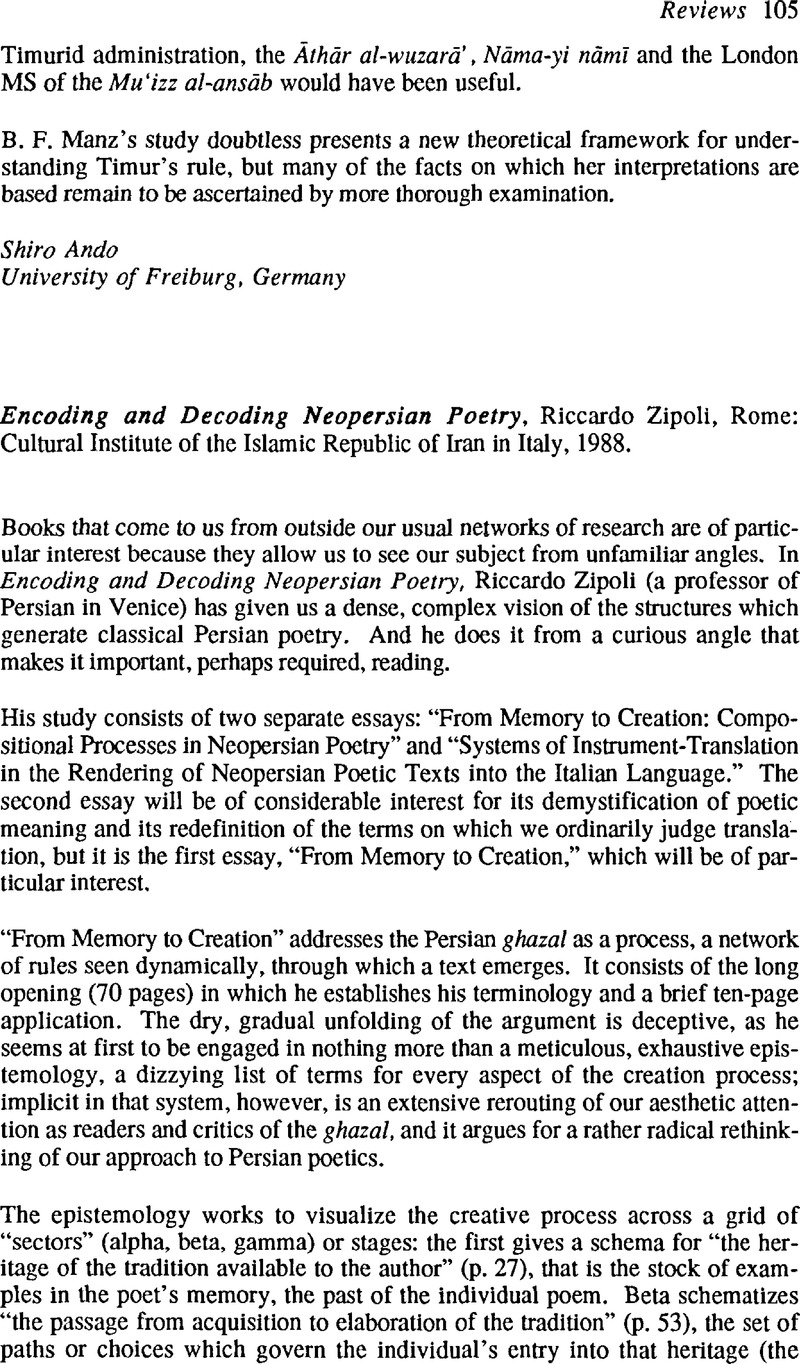No CrossRef data available.
Published online by Cambridge University Press: 01 January 2022

1. The passage in question has also been translated recently by Jerome W. Clinton in Edebiyat n.s. 1.2 (1989): 101-27.
2. It is the ghazal which begins “Bahr-e āb-e tang kay hommat-e mā āshnā gardad,” taken from the edition by B. Taraqqi. This may be the place to acknowledge that the choice of Sa'eb is probably programmatic: the Italian Persianists have taken more seriously the Iranian interest in the Indian style than we have, and have made a clear effort to accept a classical canon which stretches into the 17th century.
3. In Frye, Richard N., ed., Neue Methodologie in der Iranstik (Wiesbaden: Harrassowitz, 1974), 331-52.Google Scholar Windfuhr also opens with an analysis of Shams-e Qays.